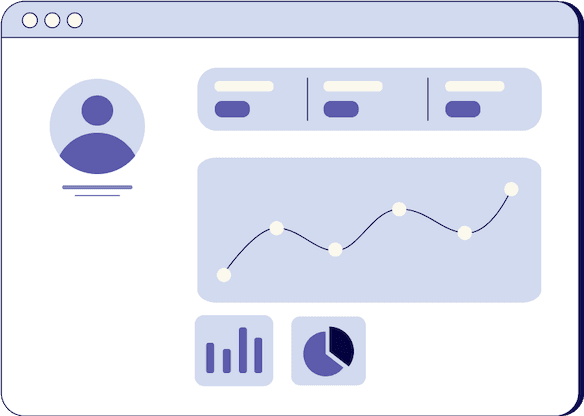.jpg&w=3840&q=75)
Unrealistic vs. Realistic Data Points
Mark Colgan
B2B Sales Consultant, Lead Sourcing Detective
.jpg&w=3840&q=75)
- duration
- 13 min
- Average Score
- 95%
- Stars
- 5
Why Bad Data Ruins Your Sales Efforts
Bad data leads to bad results. If your outbound sales campaigns rely on incorrect, outdated, or estimated data, you’ll experience:
- Wasted time on unqualified leads
- Poor response rates from the wrong prospects
- Missed opportunities by excluding great-fit companies
To build a high-impact sales list, focus on accurate, actionable, and reliable data points.
Common List-Building Mistakes to Avoid
1. Using Vanity Data Instead of Actionable Insights
Many sales teams mistakenly rely on vanity data points that seem useful but lead to false assumptions. These include:
- Estimated revenue for private companies – Often inaccurate and misleading
- Inflated employee counts on LinkedIn – May include contractors or unrelated workers
- Broad industry classifications – Too general to be useful for targeting
2. Ignoring Data Validation
No database is 100% accurate. Many rely on:
- Web scraping (automated data extraction)
- LinkedIn profiles (which users may not update)
- Email signature scraping (which can be outdated)
Always cross-check your data before using it in prospecting campaigns.
3. Filtering Out Prospects Based on Unreliable Data
Strict filtering criteria can eliminate great-fit prospects if based on:
- Estimated revenue ranges
- Inaccurate employee numbers
- Data points that are difficult to verify
Instead, prioritize must-have data that directly impacts outreach.
Easy, Moderate, and Near-Impossible Data Points: What to Prioritize
Not all data points are created equal. Some are widely available, while others are hard to verify or nearly impossible to obtain.
Easy-to-Find Data Points (Reliable & Widely Available)
These are publicly accessible and can be used to build strong prospecting lists quickly.
- Company name and industry – Found on company websites and LinkedIn
- Job titles and departments – Easily available on LinkedIn profiles
- Public contact information – Company directories, email formats, and LinkedIn profiles
- Company tech stack – Tools like BuiltWith, Clearbit, and SimilarTech
Moderate Data Points (Available, but Require Validation)
These data points may be useful, but they require more effort to confirm and can sometimes be unreliable.
- Personal work experience details – Sometimes listed in LinkedIn bios but often incomplete
- Career trajectory (promotions, job history) – Visible on LinkedIn but not always updated
- Internal tools & software usage – May appear in job postings but could be outdated
- Employee count on LinkedIn – Can be inflated due to contractors or past employees
Near-Impossible Data Points (Difficult or Private Information)
These data points are rarely public, and relying on them can slow down your sales process unnecessarily.
- Internal company decisions – Not disclosed unless announced publicly
- Future hiring or expansion plans – Only available through direct conversations
- Employee motivations and sentiments – Private unless shared in interviews
- Strategic business goals – Typically kept confidential by companies
Key takeaway: Stop chasing impossible-to-find data. Instead, focus on practical, actionable insights that will help you build effective prospecting lists.
Case Study: Why LinkedIn’s Employee Data is Misleading
Example: Airbnb’s Employee Count on LinkedIn
- LinkedIn lists 48,000 employees
- Actual employee count: 6,907
Why the mismatch? Many Airbnb hosts list themselves as employees, inflating the numbers.
Lesson: Always validate employee counts from multiple sources before using them in list-building.
Balancing Data Quality and Speed: Finding the Right Approach
Too much focus on accuracy = slow outreach
Too little focus on accuracy = poor results
The key: Find a balance where data is "good enough" for effective prospecting.
Ask yourself:
- Is this data reliable enough to segment prospects accurately?
- Will missing details stop me from engaging?
- Is this a must-have or a nice-to-have data point?
Don’t let the perfect be the enemy of good. Start outreach with verified, useful data, and refine lists as you go.
Key Takeaways: How to Improve Your Sales List-Building Process
- Bad data leads to wasted efforts and poor response rates – Always validate key data points.
- Prioritize must-have data over vanity metrics to improve targeting.
- Cross-check employee counts and other key details before relying on them.
- Balance data quality and speed—find what is "good enough" for prospecting.
- Stop chasing near-impossible data—focus on practical, actionable insights.
By implementing these strategies, you’ll increase response rates, improve outreach efficiency, and close more deals.
How Triple Session works
Training, Testing, & Feedback
Triple Session's proven formula accelerates your sales performance through consistent, organized practice, backed by measurable results.

Bite-Sized Knowledge
Our expert-led video sessions simplify complex sales concepts into easy-to-digest 5-15 minute videos for better retention.

Test Your Understanding
After each session, there will be a quiz to test your understanding and help you improve on any areas that need more attention.

Evaluate and Grow
Get progress snapshots after each quiz to track your improvements and achieve your sales mastery goals.